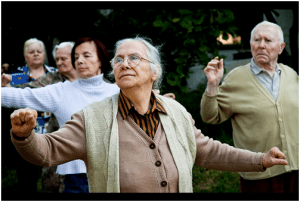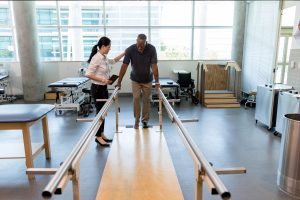Tips to make sure the seniors in your life receive the care they need
As people age, their need for support increases. Old age usually comes with mental function deterioration, increased risk of disease, and loneliness. Being there for an aging parent often comes with lots of responsibilities. The goal is to help improve the quality of their life. Here are some guidelines to help you care for your aging parents.
Watch out for health concerns
Senior people are predisposed to a wealth of health concerns, both physical and mental. Some people creep up suddenly, whereas others may experience depression and severe anxiety. As their caregiver, it is important to keep an eye on their general wellbeing. Identify potential concerns ahead of time, and be there to help. Start researching more information on common health problems in seniors. Often, your aging parent may even tell you if there’s something wrong and if they experience any concerning symptoms. However, there are times when the aging parent doesn’t realize that something is wrong. Dementia and Alzheimer’s disease are progressive diseases that can be difficult to tackle. Spend as much as time as you can with your loved one, and this way you’ll be able to determine potential symptoms that are more harming than they look.
Professional help
In case your parent or relative experiences mental of physical decline that you can’t handle by yourself, it might be a good idea to look for professional help. There are lots of healthcare services you can consider. Don’t miss out on weekly appointments to the doctor and search for ways to make their lives easier; even that may mean looking into assisted living facilities and nursing homes. Many people ignore the symptoms their aging parents have. Stay alert and look for assistance in your local community. Thanks to advanced technology, there are solutions to be close to your parent even if you live miles apart.
Make time to visit
The elderly are not just affected by medical problems. Studies have shown that many seniors living alone fight with depression, anxiety, loneliness, and severe fatigue. It might be a good idea to visit your parents at least once a week. Offer them emotional support, take the grandkids with you, and make them feel loved and cared for. Face to face visits are the best, although if that’s not possible you can stick to phone calls, or Skype chats.
Encourage socialization
Many seniors don’t want to get out of the house. They’ve been used to watching TV all day, and that’s it. Sedentary activities increase the risk of depression, so it might be a good idea to take parents out. Do things together every week. Go grocery shopping together, spend time in the park, and have a good time. Qualitative family time makes seniors feel valued. If you can’t visit often, recommend them to join a book club. Or encourage socializing with their neighbors. Living in isolation leads to physical and emotional distress. In the long term, loneliness may lead to increased fears (e.g. fear to go out, fear to talk to people, fear to call a child to say hello).
Home care
There’s a lot of debate around the notion of “home care”. Many people don’t like the idea because they associate it with improper care. The truth is, there are excellent home care facilities spread around the country. Many provide excellent services, apart from caregiving. Senior people need to stay social. They need to be active – both physically and mentally – to enjoy the best of life. Some of today’s advanced assisted living facilities are more comfortable than an actual home. These places provide excellent accommodation, lots of activities, treatments, and therapies that compel a senior to enjoy their lifestyles.
It is important for aging parents to appreciate life. The best care home in Maidstone provides exquisite services. However, for the system to work seniors must be open to change. It’s no shame in not being able to live on your own house. Rather than struggle performing daily duties, assisted living facilities are all about increasing the quality of your life. They can help you feel better, socialize with people the same age, try out lots of activities, and boost cognitive function. All these improve the quality of your life by 30%.
Guest Blog: How to Ensure the Safety of the Elderly in Rehab Centers
Rehab centers have proven to be a breath of fresh air for individuals who have fallen prey to alcohol or drug addiction. They help people cope with their life-endangering habits and transform themselves to become a better person, thus, enabling them to live a happy and healthy life all over again. Rehabs are designed carefully to deal with people with various addictions, particularly elders. From installing a quiet hand dryer to creating the room door, everything is customized to ensure the safety and wellbeing of inhabitants.
Letting go of any sort of addiction is never easy. When dealing with older adults, we need to be extra cautious owing to the fact that the ageing process makes them prone to other health issues as well. Here are a few tips to keep in mind while trying to maintain the safety of elders intact in a rehab center:
Higher a Highly Trained Staff:
The staff has a significant impact on adults’ safety and rehabilitation process. The more trained they are for the tasks, the better results will be yielded. A nurse who has experience working with younger people in a rehab center might not be fit for the task when treating older patients.
You need to ensure that your staff is professionally trained to work with ageing adults battling with addiction. Since they have different needs, their mind and body will react differently to medication. They will respond differently to therapy techniques. The behavioral changes might be hard to handle at times, but having trained staff will help deal with patients more appropriately and will ensure their health is monitored carefully.
Focus on the Environment:
When dealing with addiction among older adults, we need to pay special attention to our surroundings. Bringing comfort within the physical environment is crucial for the healing process to begin. Staying away from the problematic environment and living in a structurally designed environment accelerates the rehab process.
Inpatient rehab is the safest option for adults. The constant surveillance and support from the professionals make the detox and treatment process productive. Besides, being able to interact with someone battling the same issue as you, gives you the strength to pass the hurdles and bring out the best in you. Focusing on the environment of the rehab center is an essential step toward giving someone a new life.
Offering Aftercare Programs:
Since the goal of rehab facilities is to eradicate the alcohol or drug addiction from the patients completely, it is recommended to lend support to them even when the treatment time period is completed. Offering the aftercare program increases the success rate of your treatment. Going back to the previous environment brings a lot of stress to the patients since they will be living with all the trigger points around them.
Keeping them engaged with therapies, alumni programs, or sober living options ensures their safety and brings them physical and mental wellbeing.
Focus on Your Patients
Getting rid of an addiction is never easy. It is a lot of hard work, consistency and committed support of professionals that make it happen. We know that ‘old habits die hard’; dealing with older adults in rehab is more difficult than dealing with the younger ones. Make sure your rehab facility is fully equipped with everything that is needed for successful treatment and therapies. Keep the safety of your patients your priority for better outcomes of your treatment processes.
Guest Blog: 5 Ways Seniors Can Improve Their Quality Of Life
Research indicates that Americans are living longer than any other period in history. The best way to ensure your quality of life in your senior years is by addressing mental and physical health. Here are some tactics that can help make your golden years even more exciting.
Be Active in Your Healthcare
Not only do you need to make sure you have a primary care physician familiar with your health history, you also need to make sure you stay up to date on how you’ll pay for regular checkups, appointments with specialists, and medication. This includes keeping an eye on your Medicare plan and making changes to it as necessary. You may want to consider signing up for a Medicare Advantage plan, which offers perks that regular plans don’t cover. For instance, a Humana Medicare Advantage Plan offers benefits like a Nurse Advice Line, which saves you from the time and hassle of visiting your doctor for every little ache and pain, and enrollment in SilverSneakers, which will help you stay active throughout your golden years — another critical component of your quality of life.
Exercise Regularly
The body isn’t able to repair itself as quickly when we become older — not to mention, the loss of muscle mass contributes to mobility issues. Not only can regular exercise improve both of these concerns, but it can also regulate blood pressure and sugar management, boost mood, strengthen the immune system, improve gastrointestinal function, enhance cognitive ability, prevent heart disease and diabetes, and make it easier to manage weight. There’s no need to push yourself too hard. Even simple walking for 30 minutes four times a week is enough to get going. Seniors can also work out at home with exercise videos, fitness apps, and Wii games.
Eat Well
Eating a healthy diet is crucial at every stage of life, but takes on an even more important role as our bodies change with age. Your doctor may recommend a specific diet that tailors to your unique health needs — if you need to consume more protein or calcium, for example — but in general, you’ll need to eat foods that make your microbiome happy. Not only will eating probiotic-packed and fermented foods help you stay regular, you’ll actually feel happier and more energized overall by taking care of your gut health, since doing so ramps up your body’s production of the feel-happy chemical serotonin.
Improve Quality of Sleep
Research suggests that seniors can benefit from quality and quantity of sleep more than they did in their younger years. There are several tactics that can make it easier to get ample shuteye, since it can be a challenge for the elderly. This includes increasing daytime light exposure, ditching caffeine and alcohol in the evening hours, exercising early in the day, making your bedroom a cool and dark respite, unplugging from electronics at least one hour before bed, and consistent bed- and wake-up times.
Stay Social
It’s important to stay social in order to keep your mental health in check. Some easy ways to stay socially engaged include connecting with friends via social media, joining a club or senior center, volunteering, helping out your family (such as babysitting the grandkids so your adult children can enjoy a date night), and taking up a part-time job.
It’s important that you have an established primary care physician and that you visit him or her regularly. You’re more likely to prevent illness and disease when you’ve got a health care schedule in place (as well as a plan to pay for it). A pro can also direct you to other specialists and help guide you through the financial side of care, too.
Photo Credit: Pixabay





